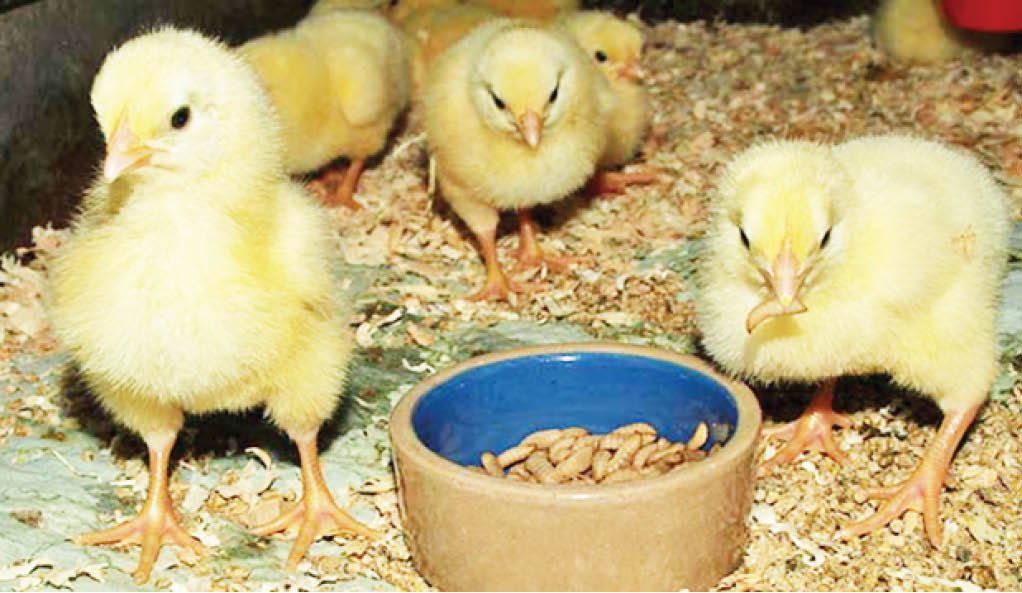Lockdown: Cheaper ways to produce your poultry feeds
The effect of COVID-19 is biting hard on livestock farmers particularly those in the poultry industry. The lockdown shrunk their market by almost 50% because those buying are no longer in business and many are struggling to feed their birds as farm incomes seriously affected. As COVID-19 locks down their markets, there is increasing pressure […]

Poultry farmers are lamenting the increasing cost of feeding their birds as result of the lockdown
The effect of COVID-19 is biting hard on livestock farmers particularly those in the poultry industry.
The lockdown shrunk their market by almost 50% because those buying are no longer in business and many are struggling to feed their birds as farm incomes seriously affected.
As COVID-19 locks down their markets, there is increasing pressure to look at cheaper ways of reducing the cost of production by producing their feeds.
Mr Augustine Ben, who is a poultry farmer in Nasarawa State, said the lockdown affected many small-scale farmers like him because buying quality feeds is increasingly becoming difficult.
“Buying a bag of feed at N3,850 makes it difficult for farmers to make profit in poultry these days. Because of that cost; I have to look into other ways of finding solution to the feed problem. One of the ways is to see to how I can produce my own feed.
“But that too is now a challenge as the cost of maize, and soybeans have gone up because the markets are also affected by the COVID-19. I have resulted to be collecting maize bran from local maize millers around and mix it with the ones bought from the market just to maximize the feed, though it will not give you the same result, it reduces the cost of feed by almost 50%,” he said.
Like Mr Ben, another farmer like Mrs Biyaya Danlami, said feed is the major headache, adding that if you must be in business, one must strive to keep it down as much as possible.
“Since the begining of lockdown, I have been using more of maize bran, soybeans for my broilers,” she said.
Many experts agreed that farmers, who produce their own feeds save money as feeds take up to 80% of the cost of production.
An animal scientist and consultant, Akin Babalola, advised that to formulate feeds, farmers have to use the Pearson Square method. In this method, the digestible crude protein (DCP) is the basic nutritional requirement for any feed preparation for all animals and birds.
He, however, warned that each class of chicken has its nutritional requirement. For example, if we want to make feed for layers, the feed should have at least 18% crude protein.
Basic ingredients for making your feeds
Some of the basic crops you need to formulate your feeds are maize, maize bran, cotton seed cake, soya beans, sun-flower or fish meal.
Experts said that in addition to these basic ingredients, farmers need to add several feed additives (micronutrients, minerals and vitamins) to ensure that the birds have daily nutrient need.
Therefore, to make a 70kg bag of feed for layers, a farmer would require the following ingredients: 34kg of whole maize, 12kg of soybeans 8kg of fishmeal, 10kg of maize bran and 6kg of lime (as a calcium source).
Essential tips on feed preparation
The animal scientist presented the following tips (in his words) for making feed:
When making feed rations yourself, it is important to do experimental trials, by isolating a number of chickens, feed them and observe their performance. If the feed rations are right, the broilers will grow fast and layers will increase egg production (at least 1 egg after every 27 hours).
Buy quality fishmeal from reputable companies. If fishmeal is used, the farmers must be sure of its quality; most of the fishmeal in the markets are contaminated.
Farmers are advised to go for soya meal if they cannot get good quality fishmeal.
Always mix the micronutrients first before mixing them with the rest of the feed.
For mixing, farmers are advised to use a drum mixer. Using a shovel to mix feed is not recommended because the ingredients will be unevenly distributed.
The feed should contain calcium for the formation of eggshells. Laying hens that do not get enough calcium will use the calcium stored in their own bone tissue to produce eggshells.
Layer feed should be introduced at 18 weeks.
Farmers, who have more than 500 chickens, it is advisable to make one tonne of feed at once.
Ensure that all the feed you make will last for one month and not longer. This ensures that the feed remains fresh and safe for chickens. Any feed that lasts more than one month may deteriorate in quality and can affect your birds.
